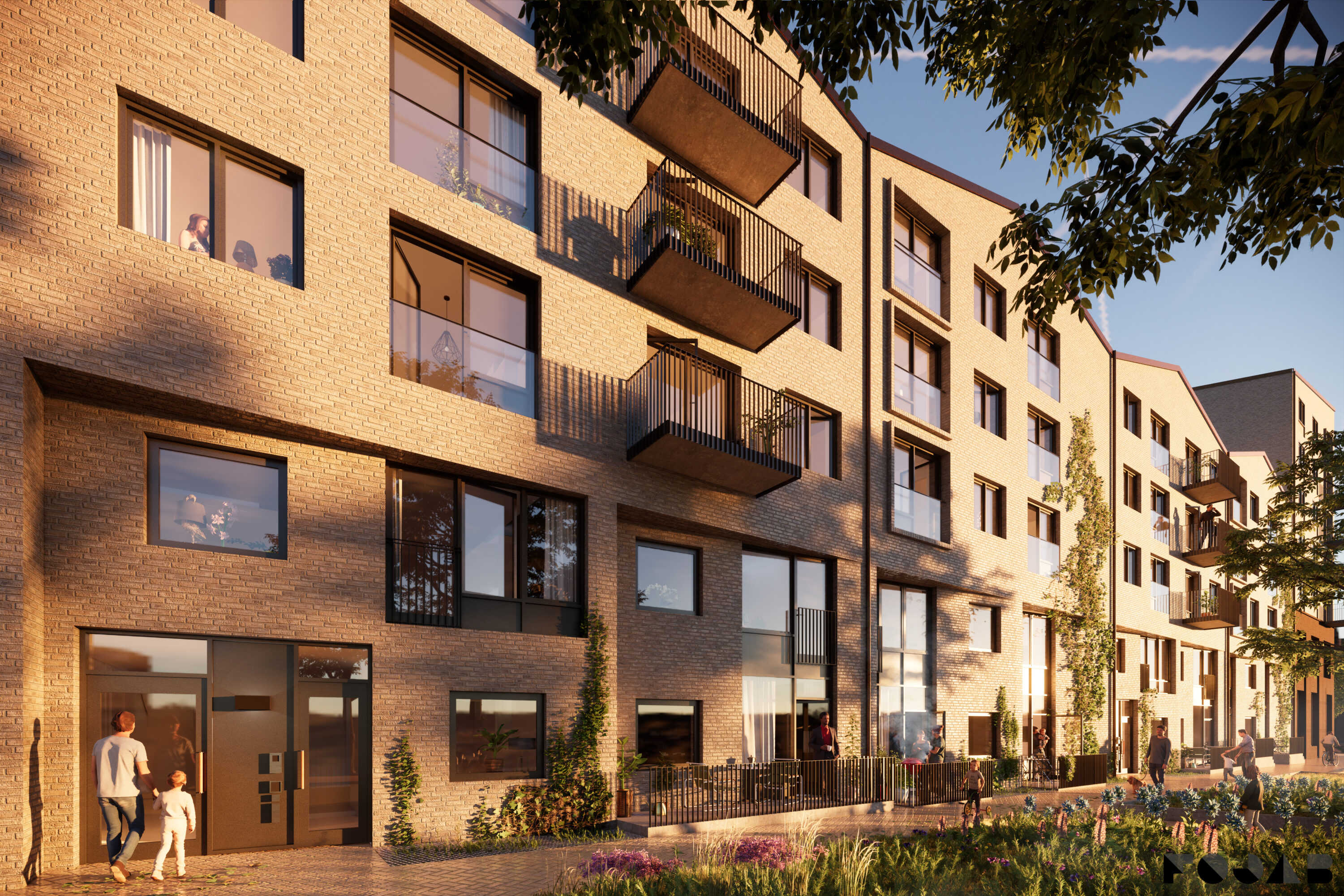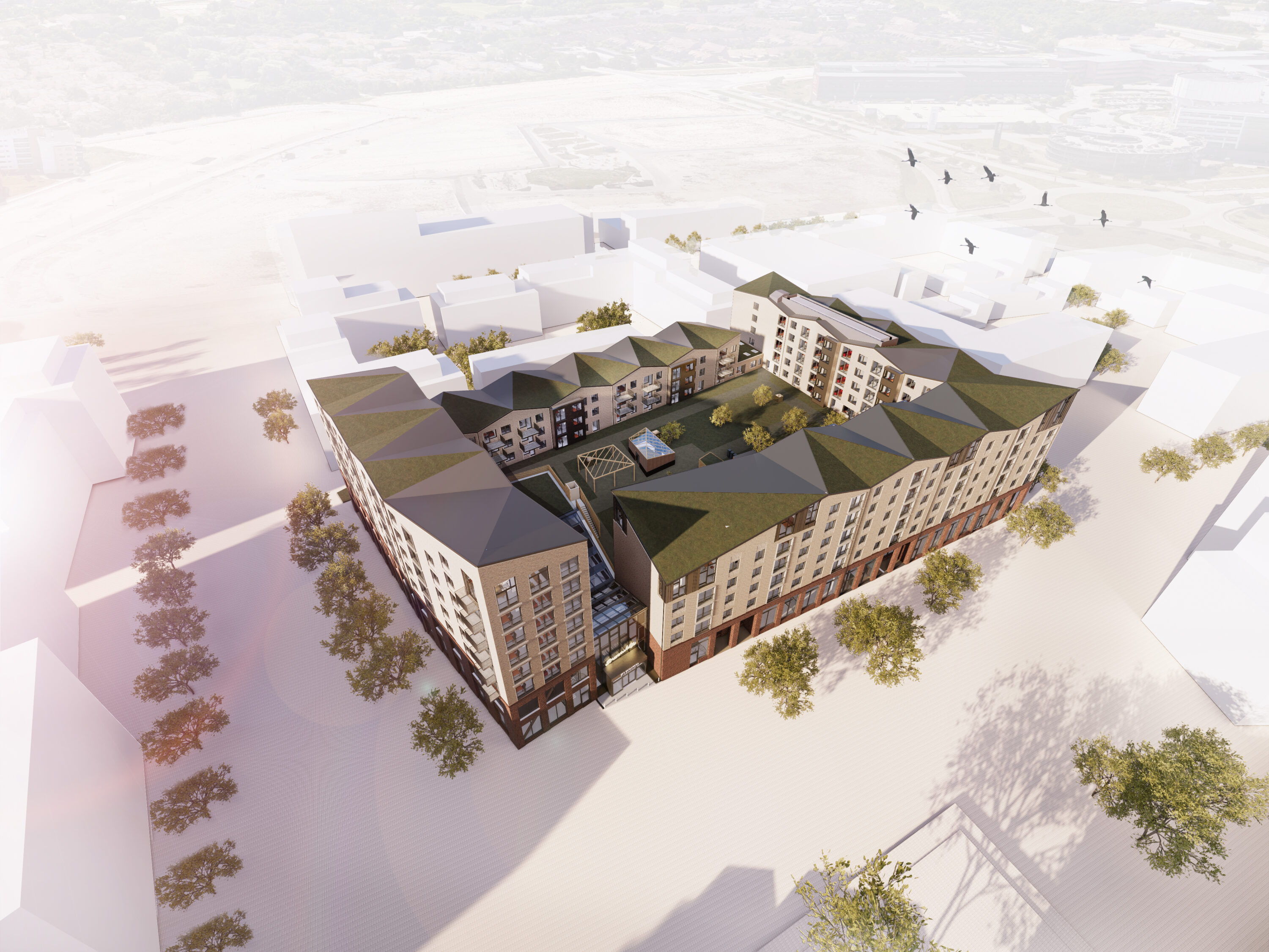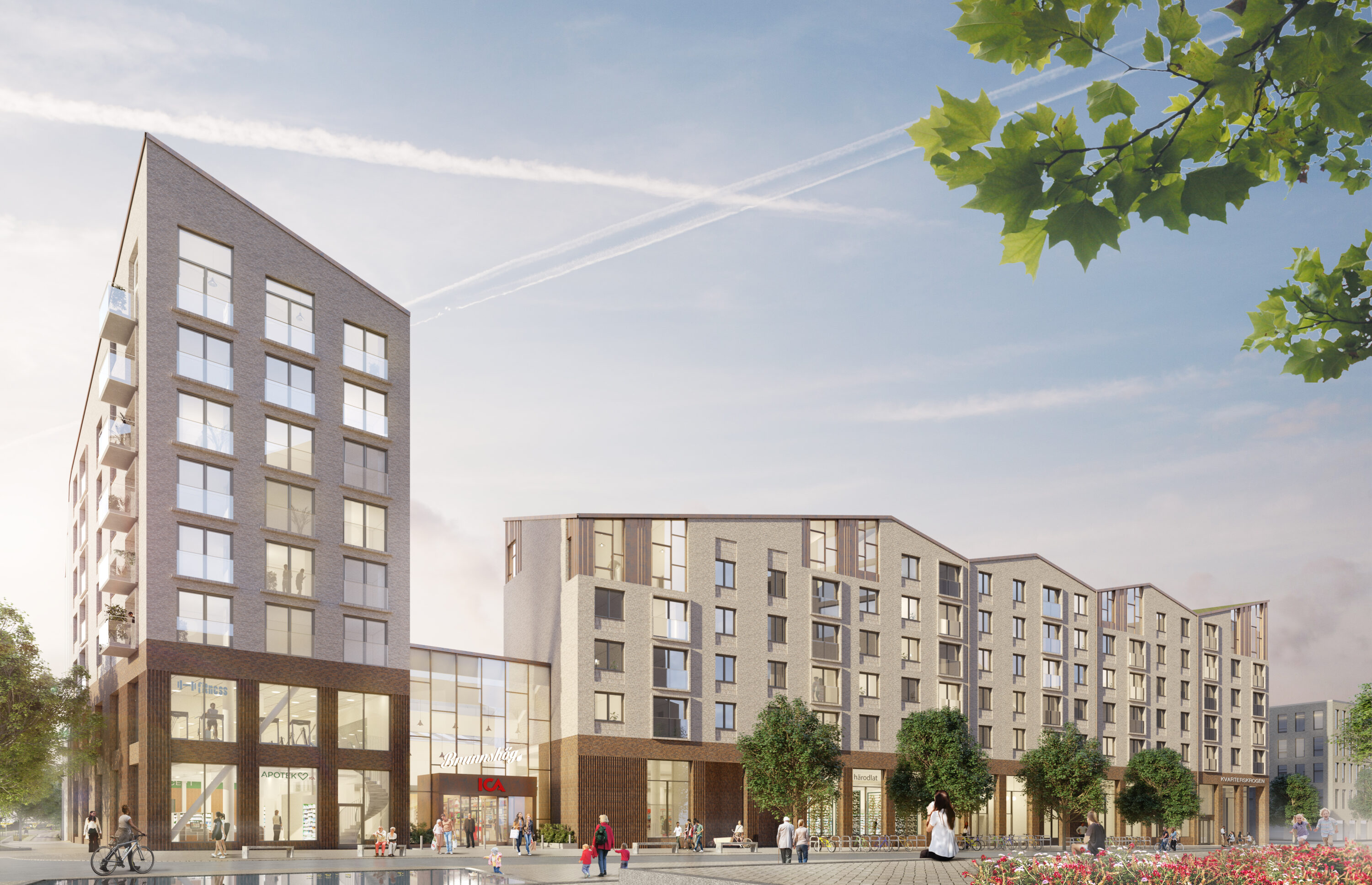2022-02-14
FOJAB designs landmark blocks in new city district
In the center of Lund's newest district Brunnshög, FOJAB has developed Bona Terra on behalf of ICA Fastigheter, an urban block based on local support, a strong design idea and a comprehensive sustainability program.
Bona Terra forms the backdrop to the district square and thus sets the tone for Brunnshög's center. The block is designed in a classic urban structure, with fine details for an extra experience. It consists of two L-shaped building bodies of different heights, between six and eight floors, with folded roofs that are fitted with solar cells or greenery.
Extra emphasis has been placed on the ground floors. Carefully composed brick details create shadow play that makes it interesting to stroll around the large building. The character varies on the different sides, providing new experiences along the way. Even on the upper floors there is a sense of depth in the facade in the form of window frames, window niches and balconies.
Brunnshög is emerging as a new district in northeast Lund, close to Max IV and ESS. When fully developed, 40 000 people will live and work here. The Bona Terra block contains 258 rental apartments, many of which are smaller in size to suit young people, students and researchers. But also large apartments for families with children and friends.
On the ground floor, an inspiring food store with a glass roof serves as a hub for the area. There will be a cultivation room, visible to passers-by, where vegetables are grown for sale. Three more shops and a pharmacy will have their entrances facing the square. One floor up, a gym is located behind large windows and the block also has space for a restaurant.
- With Bona Terra, we return to an urban design tradition that existed in older city centers, with a large variety of activities on the ground floors and strong design ideas for entire blocks. Together with ICA Fastigheter, we have had the privilege of designing a sustainable structure with high architectural quality from the urban scale all the way to the detailing of the buildings," says responsible architect Andreas Jentsch.
The diversity of species in the courtyard contributes to biodiversity. Cultivation is encouraged through planting beds and orangery and a compost is established for plant waste and soil improvement. Hard surfaces are minimized to reduce the load on the stormwater system.
Construction will start this spring and Bona Terra will be completed in 2025. The building contractor is Serneke.


